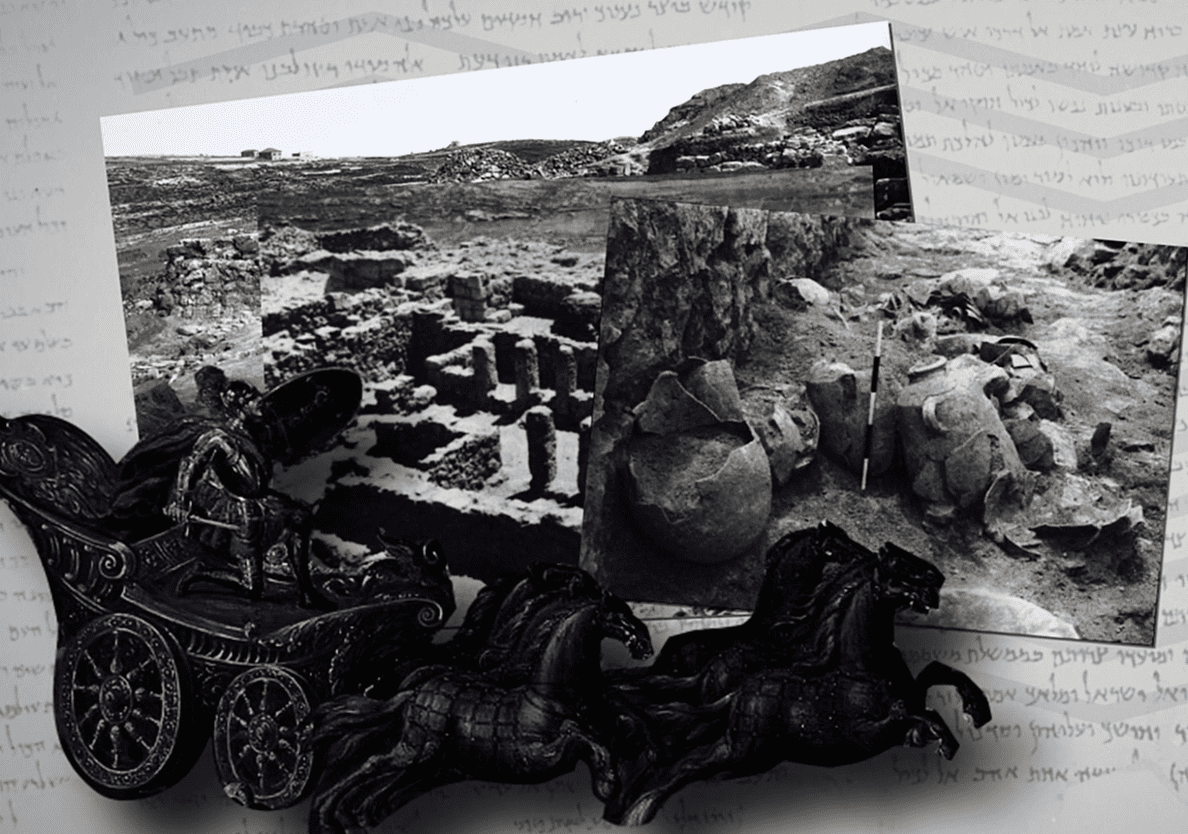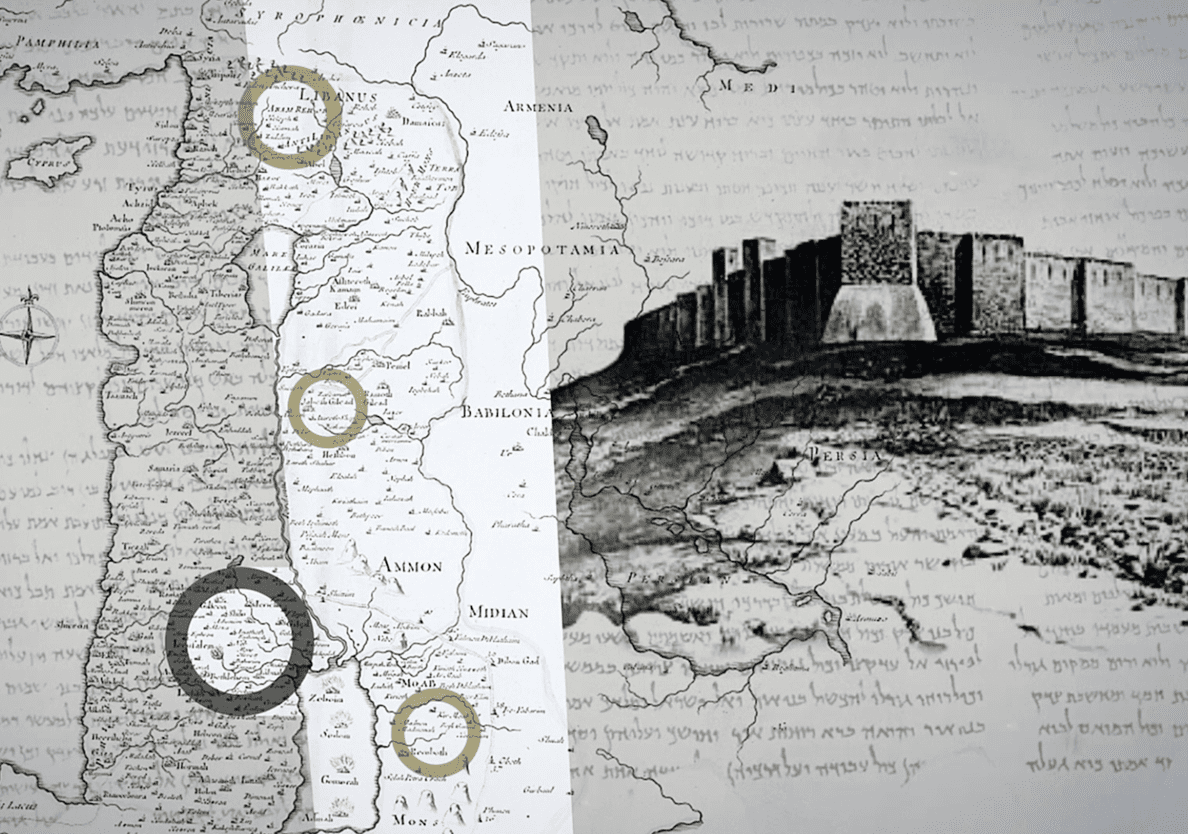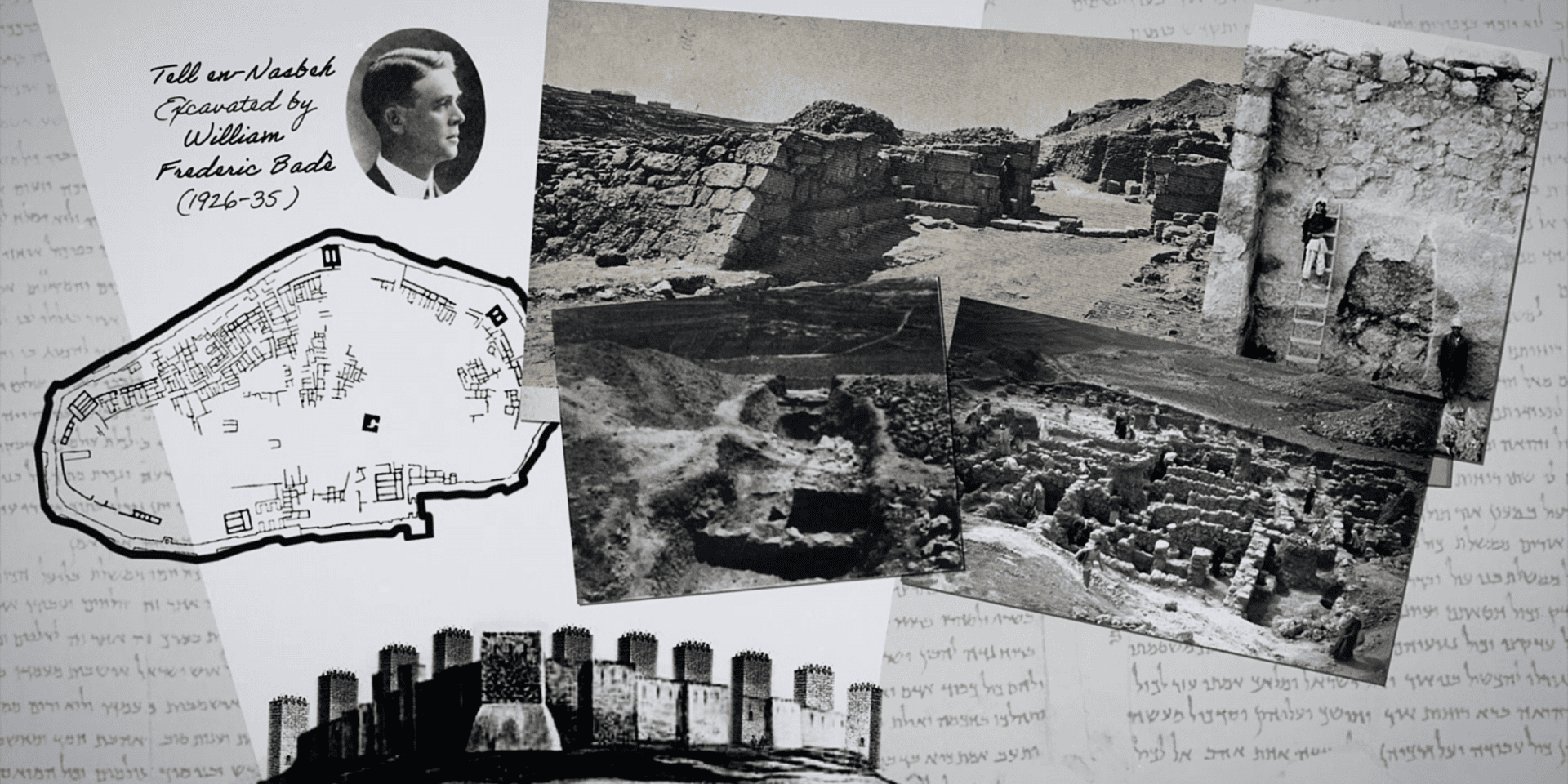In Hebrew, the place name “Mizpah” means “watchtower”. With this meaning in mind, then, it’s not surprising that there were a few Biblical locations named this. First, Mizpah was used as another name for the pile of stones set up by Jacob and Laban in Genesis 31; this location seems to have been East of the Jordan river and may be why a later city here, in what was called the region of Gilead, was called Mizpah. This later city is where the judge of Israel Jephthah made his home (Judges 11:34). The second Mizpah mentioned in Scriptures is a valley that saw warfare from Joshua and the invading Israelites (Joshua 11:1-5), this valley was in the very north of Israel. Another Mizpah is called Mizpah of Moab located East of the Dead Sea (1 Samuel 22:3), this was a city outside of Israel where King David took his parents for protection while King Saul was trying to kill him.
“After the Babylonian destruction of Jerusalem, Mizpah is turned into Judah’s new Babylonian capital city, it even became home to the prophet Jeremiah and his scribe Baruch.”
The fourth Mizpah is the most significant Biblically, and the one that has been likely identified archaeologically. This Mizpah was a city in the territory of Benjamin listed in Benjamin’s inheritance in Joshua 18:21-28. In the Bible, this Mizpah of Benjamin was an important place of gathering and worship. In Judges (Judges 20-21) outraged tribes of Israel gathered here “before the Lord”. In 1 Samuel 7:5-6, the prophet and judge Samuel not only gathered the Israelites here, Mizpah is a city on a circuit that he visits regularly (Bethel, Gilgal, Mizpah, Ramah), and here he anoints Saul the first king of Israel (1 Samuel 10:17-25).
Later in the Scriptures (1 Kings 15, 2 Chronicles 16), King Asa of Judah (908-867 BC) fortifies Mizpah to defend himself against northern Israel. While the prophet Hosea condemns the people for apostate worship citing Mizpah as a place where they’ve engaged in idolatry (Hosea 5:1).
Still later, after the Babylonian destruction of Jerusalem (586 BC), Mizpah is turned into Judah’s new Babylonian capital city (2 Kings 25, Jeremiah 40-41), it even became home to the prophet Jeremiah and his scribe Baruch. When the exiles returned to rebuild the Temple and the walls of Jerusalem, men from Mizpah are listed as helping construct the wall (Nehemiah 3:7, 15, 19).


This Mizpah in the territory of Benjamin is believed by most to be located at a site (Tell en-Nasbeh) 8 miles northwest of Jerusalem.[1] Located on a major north-south road, here Mizpah would’ve had firm control over traffic to Judah’s capital, a major incentive for King Asa to make it formidable (1 Kings 15).[2] Archaeological excavations that were carried out here (1926-35 by William Frederic Badè) reveal a history that works hand-in-hand with the Biblical record.[3] Remains from time period of the Judges (Iron Age I, 1200-1000BC) were found showing the city was inhabited when the Bible said Israel and Samuel were gathering at Mizpah. In the next period of the Kings (Iron Age II, 1000-586BC), the city saw a massive refortification process that replaced the old city wall with a new one. The old wall was the back walls of an outer ring of houses, but the new wall was 15 feet thick, plastered, and included 11 towers, a smooth sloped area down to a lower retaining wall and at least in some areas, a dry moat. This new wall and its double gate complex are identified as Asa’s upgrades to the city.[4]
A rich history from the Babylonian Exile period has been unearthed here as well, a palace, larger houses and jars that may point to its use as an administration centre. A unique signet seal from this time was also found bearing the name “Jaazaniah, servant of the king” This may be the seal of the Jaazaniah mentioned in 2 Kings 25:24 and Jeremiah 40:8.

Corie Bobechko is a daily co-host, speaker, and writer of Bible Discovery. She also hosts a YouTube channel that shows how history and archaeology prove the Bible. Her heart for seekers and skeptics has led her to seek truth and share it with others. Corie also has a Bachelor of Theology from Canada Christian College.
[1]Jefferey Zorn, Tell en-Nasbeh: Biblical Mizpah of Benjamin
http://jrzorn.arts.cornell.edu/frames2.htm
[2] Jefferey Zorn, Mizpah Mizpah, Wherefore Art Thou Mizpah, August 15, 2008.
https://www.biblicalarchaeology.org/daily/biblical-sites-places/biblical-archaeology-places/biblical-mizpah/#note01
[3] Zorn, Jeffrey R. “Mizpah: Newly Discovered Stratum Reveals Judah’s Other Capital,” Biblical Archaeology Review 23.5 (1997): 28–31, 34–38, 66.
https://www.baslibrary.org/biblical-archaeology-review/23/5/1
[4] Zorn. Ibid.
• The alternate site is Nebi Samwil, but there isn’t any evidence that it was occupied in the time of the Judges. And its farther away (3 miles) from the main north-south road.







Comment: the lord our God is good at all times